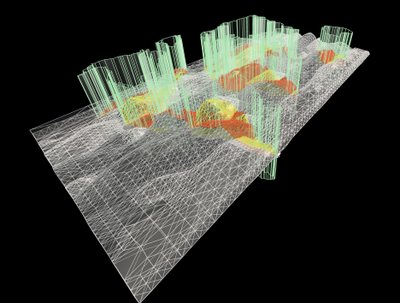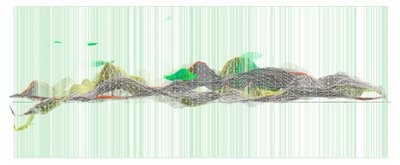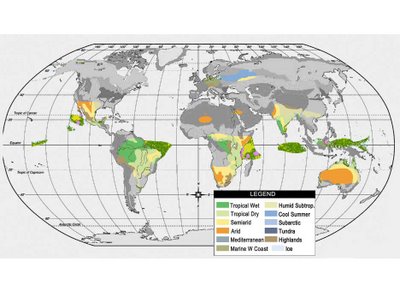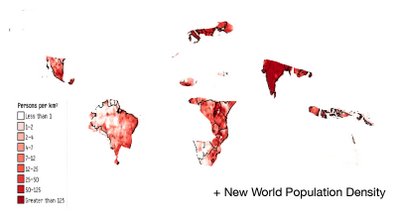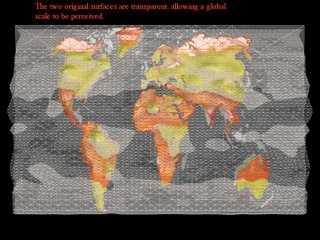I chose to address the issue of energy conservation and sustainability. Moving forward with this idea I’ve chosen to use the new transmission archipelagos I’ve created to act as Megastations for gathering and converting solar energy and transmitting that energy to specific locations across the globe.
My research has shown me that energy consumption is predominant (compared to the rest of the world) in the United States, China, and other areas throughout Europe. Through my mapping I’ve noticed that a lot of the sun’s energy coming into our atmosphere lands in areas where little energy is being consumed, therefore I propose distributing energy collected in these areas to areas where large consumption is taking place. The final solar mapping image displays this information for us visually.
 After defining the site I moved forward to investigate ways to effectively define my proposal and even the context that it would occupy. I first thought of forms able to be occupied in the water in areas located within the transmission archipelagos, but the idea seemed to deviate from the research I had done. I then chose to take the archipelagos I created and move them upward into the sky, allowing them to be suspended high in the air in the clouds, and further. Based on some of the research I had reviewed on projects such as Buckminister Fuller’s Cloud nine and the Matrioshka Brain, I became intrigued with suspended and free-floating architecture. Fuller’s floating geodesic domes act as large hot-air balloons, being suspended in the air and tethered to an area on the ground. He calculated that the structure on the outside would weigh approximately one thousandth the amount of air trapped inside the dome. As the temperature inside is raised, it creates a lifting effect that makes the form buoyant. Another article I reviewed discusses harnessing wind power by tossing blimp-like structures in the air, or tethered windmills in the jet stream. These become intriguing to me because it brings rise to the complexity of air streams and the various possibilities of occupying our atmosphere.
After defining the site I moved forward to investigate ways to effectively define my proposal and even the context that it would occupy. I first thought of forms able to be occupied in the water in areas located within the transmission archipelagos, but the idea seemed to deviate from the research I had done. I then chose to take the archipelagos I created and move them upward into the sky, allowing them to be suspended high in the air in the clouds, and further. Based on some of the research I had reviewed on projects such as Buckminister Fuller’s Cloud nine and the Matrioshka Brain, I became intrigued with suspended and free-floating architecture. Fuller’s floating geodesic domes act as large hot-air balloons, being suspended in the air and tethered to an area on the ground. He calculated that the structure on the outside would weigh approximately one thousandth the amount of air trapped inside the dome. As the temperature inside is raised, it creates a lifting effect that makes the form buoyant. Another article I reviewed discusses harnessing wind power by tossing blimp-like structures in the air, or tethered windmills in the jet stream. These become intriguing to me because it brings rise to the complexity of air streams and the various possibilities of occupying our atmosphere.Moving forward with the design of my proposal, I envisioned the archipelagos as a multitude of objects defining the entire form of the transmission archipelagos from the inside out, like a point cloud. These objects I now form are spherical in shape move around freely within the transmission archipelagos, continuously moving.



Since the objects are constantly moving, the surfaces remain in constant contact with the sun’s rays. Photovoltaic technology will benefit from this and the surface of the newly formed solar molecules will be covered with photovoltaic panels, becoming Mega photovoltaic farms. Energy gathered from the surfaces will be directed to its core, where it will be converted into microwaves and transmitted to microwave stations on the earth’s surface, where it will then be converted back into usable electricity.

The spherical form takes advantage of the energy both absorbed and irradiated back into the atmosphere in the site. The “solar molecules” appear as cloud-like forms across the sky, continuing its language across the earth. Being that the solar molecules are not bounded by a mesh or type of netting, I imagine them having magnetic properties, maintaining an attraction that keeps them grouped.



all original illustrations and models












